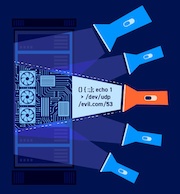ProfessionalCommunity Edition
Testing for blind SSRF with Burp Suite
-
Last updated: December 12, 2025
-
Read time: 1 Minute
Blind server-side request forgery (SSRF) is a vulnerability that allows an attacker to induce an application to send HTTP requests to a specified URL, but no response is returned to them.
To detect blind SSRF vulnerabilities with out-of-band testing, you can use Collaborator to inject a domain into a request that attempts to trigger an out-of-band interaction with your target application. Burp then monitors the Collaborator server for any out-of-band interactions with that domain.
If Collaborator detects that your application has sent a request to the inserted domain, that means it's vulnerable to SSRF.
Steps
You can follow the tutorial below by using the Blind SSRF with out-of-band detection lab from our Web Security Academy.
To test for blind SSRF with Burp Suite:
-
Go to Proxy > HTTP history. Identify a request in which you want to insert a Collaborator payload. For the lab, use a request that includes the
productIdparameter. - Right-click the request and select Send to Repeater.
- Go to the Repeater tab.
-
Right-click where you want to insert a Collaborator payload and select Insert Collaborator payload. In the lab, replace the domain in the
Refererheader with a Collaborator payload. - Click Send.
- Go to the Collaborator tab and click Poll now. The Collaborator tab lists any interactions your target application initiated with the Collaborator server.


